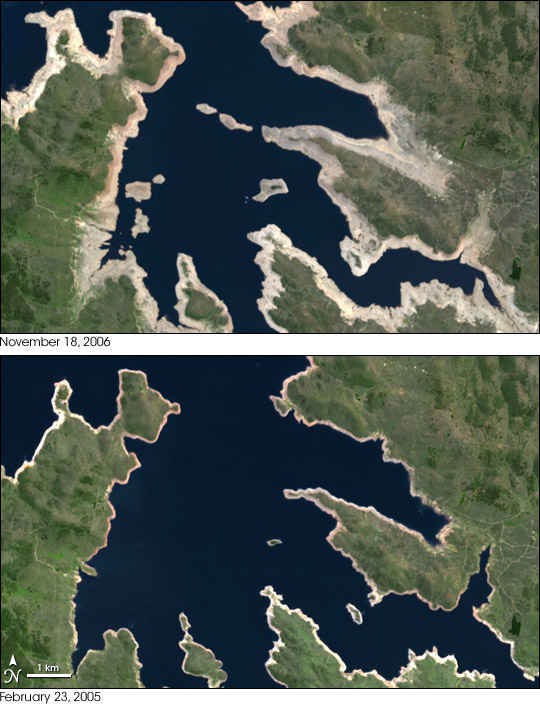


As April 2007 turned into May, parts of southeast Australia received some welcome rain. Nevertheless, weather forecasters said that it would takes months of record-breaking rainfall to pull the region out of severe drought. In late April, the company in charge of the lakes and reservoirs that make up the Snowy Mountains Hydroelectric Scheme in southern New South Wales reported that lake levels were at 10 percent of capacity, the lowest they had been since the system was built about 50 years ago.
This pair of image from the Advanced Spaceborne Thermal Emission and Reflection Radiometer (ASTER) sensor on NASA’s Terra satellite reveals the dramatic impact the drought has had on Lake Eucumbene, the largest of the lakes in the Snowy Scheme. The lower image shows the lake on February 23, 2005, and the top image shows it on November 18, 2006. (A large image showing the entire lake, partially covered by clouds, on March 17, 2007, is provided via a link above). Water levels continued to drop throughout the end of 2006 and the start of 2007.
Clearly, rainfall has not been sufficient to recharge the lake. Withdrawals have lowered the lake level dramatically and exposed several additional meters of shoreline around the lake. In the lower right quadrant of the images, falling water levels have rejoined an island to the mainland. New islands have appeared in the lake’s interior, in the center and left parts of the 2006 image.
NASA image created by Jesse Allen, using data provided courtesy of the NASA/GSFC/MITI/ERSDAC/JAROS, and U.S./Japan ASTER Science Team.